How to Fix Persistent Netflix Buffering for Uninterrupted Streaming
Netflix may experience continuous buffering due to misconfigured router settings or ISP-imposed restrictions. Occasionally, Netflix might buffer consistently or become stuck at a certain percentage, such as 25% or 5%. This problem could occur across all content, although rarely it may affect only specific shows or movies.

The following are commonly identified as primary factors of this issue:
- Outdated or Corrupt Firmware of the Device or Router: Incompatibility with Netflix, due to outdated or corrupt firmware in your router or device (such as a smart TV), may prevent timely parsing of data packets and result in buffering.
- Router’s Security Plugin: Router security plugins, such as Orbi Armor, may interfere with the data traffic between your device and Netflix servers, increasing the time needed to verify the security of data packets, which can lead to buffering.
- MTU Size of Router: A buffering issue may arise if your router’s MTU size is incompatible with Netflix servers, causing servers to take extra time to process the data packets.
- ISP Restrictions: Some ISPs impose limits on web traffic from streaming services. If your ISP is doing so, this may result in Netflix buffering.
1. Re-log into Netflix
A temporary glitch within Netflix might disrupt proper server communication, potentially leading to the buffering issue. Re-logging into Netflix could resolve this.
- Launch the Netflix app and tap on More.
- Tap on the Sign Out button and confirm to sign out.
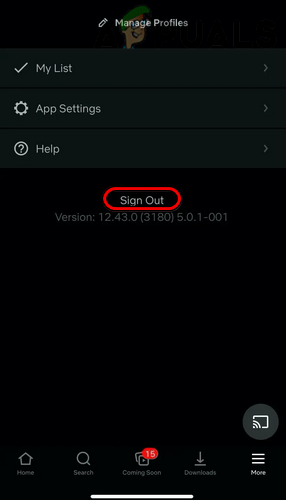
Sign Out of Netflix - Relaunch the Netflix app, log back in, and check if the buffering issue is resolved.
- If not, try connecting the streaming device to a different HDMI port on the TV.
- If the issue remains, test using a different Netflix profile to see if this resolves the error.
2. Perform a Cold Restart of the Devices and Networking Equipment
Buffering can also be a result of a temporary communication glitch between your device and the Netflix servers. A cold restart of the problematic devices and networking equipment may resolve this.
- Power off the affected device (like a TV or streaming device) and networking equipment (such as a Wi-Fi extender or router).
- Unplug the power cables from their power sources.
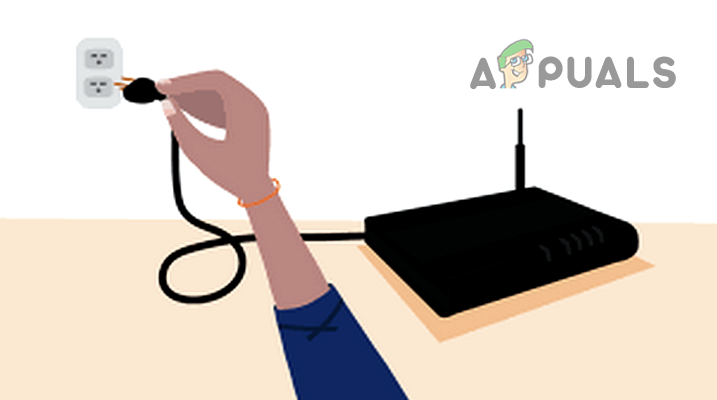
Unplug the Router from the Power Source - Press and hold the power button of the affected device for 20 seconds.
- Wait for 5 minutes before plugging the power cables back in and then power on the router, waiting for it to fully boot up.
- Finally, power on the device and see if the Netflix buffering issue has been resolved.
- If not, during buffering, press and hold the power button of the device until it restarts or powers off.
- Then turn the device back on and check if the Netflix buffering issue is gone.
3. Update the OS of the Device to the Latest Build
An outdated device OS might be incompatible with Netflix, causing the buffering issue. Updating your device’s OS to the latest build could resolve this. We’ll illustrate the process using an Apple TV’s firmware update as an example.
- Open the Apple TV Settings and select System.
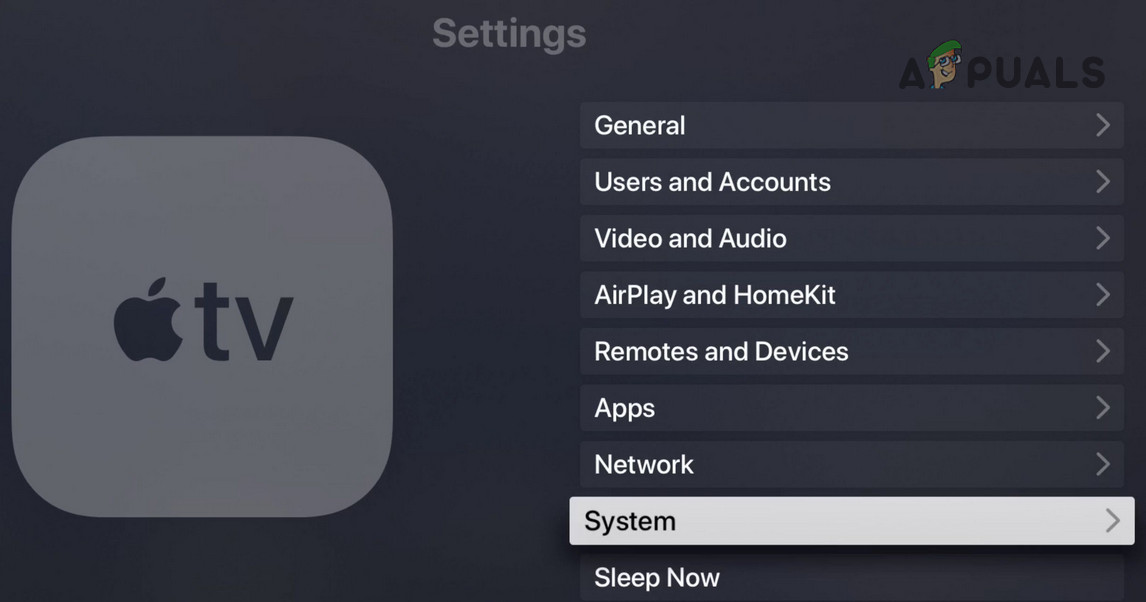
Open System in the Apple TV Settings - Select Software Updates and choose Update Software.
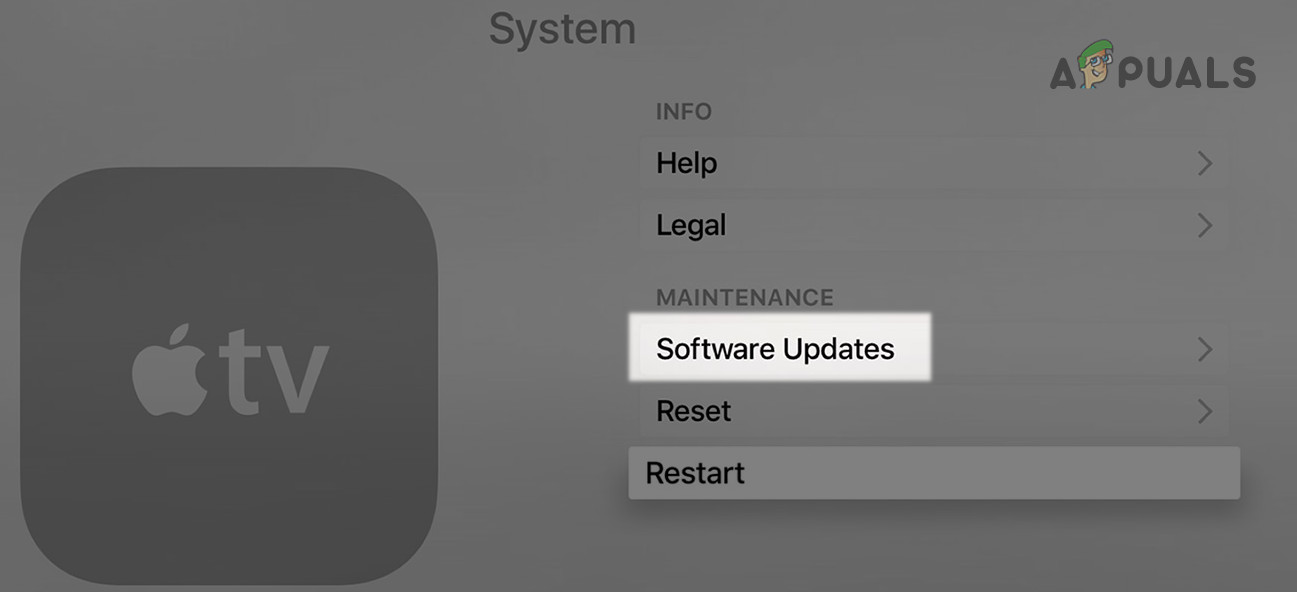
Open Software Updates in the System Settings of Apple TV - If an update is available, download and install it.

Update Software of the Apple TV - After the update, restart the Apple TV and check if Netflix is functioning properly.
4. Update the Router’s Firmware to the Latest Build
Netflix may continue to buffer if the router’s firmware is outdated, which could lead to data packet parsing issues. Updating the firmware might rectify the Netflix buffering issue.
- Using a web browser, navigate to the router’s configuration page (like 192.168.1.1).
- Login using your credentials and proceed to the Management or Advanced tab.
- Find the Firmware Update option and click on Check.
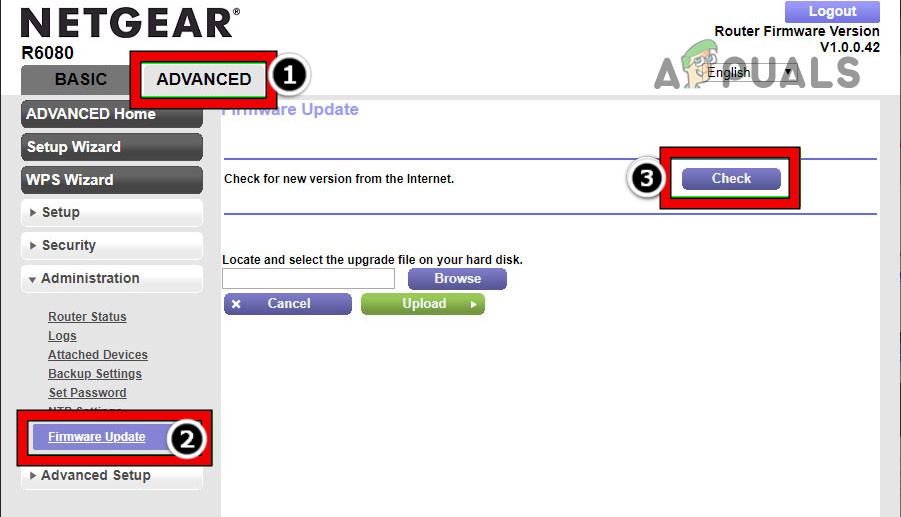
Check for the Update of the Router’s Firmware - If an update is detected, let it complete, and then restart your router and connected devices (TV, streaming devices, etc.).
- Once everything is back online, launch Netflix and verify if the buffering has stopped.
- If the issue persists, try relocating the router closer to your streaming device or TV.
- If these steps don’t work, consider forwarding the specific ports that Netflix requires (commonly 5223, 20, 21) in your router’s settings to alleviate the issue.
5. Try Another Network or Network Type
If the current network is throttling or capping Netflix traffic, as some ISPs do for streaming services, trying a different network or connection type (like Ethernet) may solve the problem.
- Test whether using a wired Ethernet connection resolves the buffering issue.
- If there is no improvement, disconnect the device from the current network and try another one, such as using a phone’s hotspot with a strong internet connection.
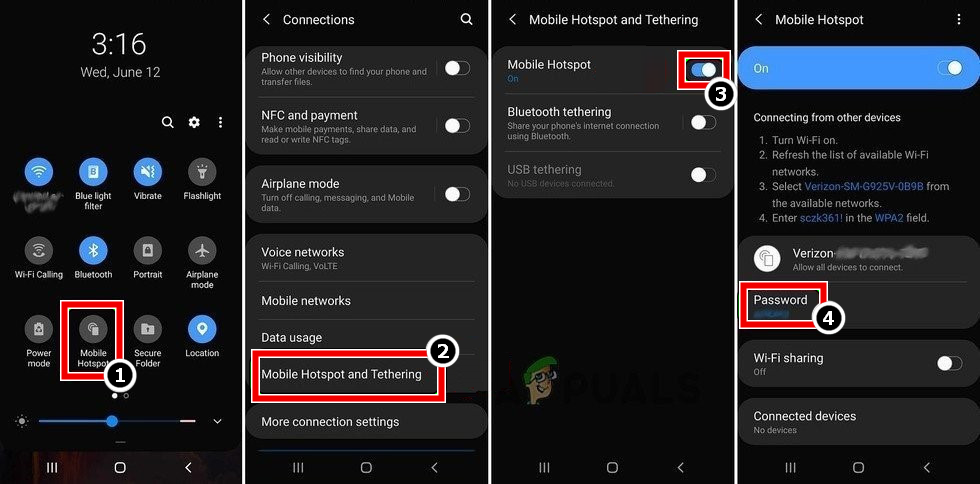
Enable Hotspot of Your Phone - Check if this change has resolved the Netflix buffering issue.
- If you still experience buffering, disconnect all other devices from your network except for the one experiencing issues, restart it, and then check if Netflix streams without buffering.
If the problem does not persist on a different network, then it may be related to your primary network setup. Directly connecting your device to the internet (bypassing the router) could pinpoint whether the router is the source of the issue.
6. Disable the QuickStart Feature on the Device
The Quick Start or Quick Boot feature, found in devices such as LG TVs, allows for a faster boot-up by not fully powering down certain system modules when switched off. However, if a device encounters a temporary glitch leading to buffering issues on Netflix, that glitch might persist through multiple restarts. Disabling this feature could solve the Netflix buffering problem.
- Navigate to the LG TV Settings and select All Settings.
- Move to the General tab and toggle off the QuickStart or QuickStart+ feature.
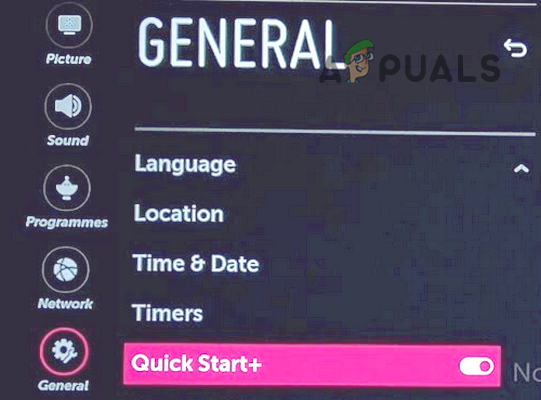
Disable QuickStart in LG TV Settings - Power off the LG TV and disconnect the power cable from the power source.
- Wait for a minute, reconnect the power cable, and then turn on the TV.
- Open Netflix to see if the issue has been resolved.
7. Disable QoS of the Router
Routers with QoS features prioritize web traffic, allowing what is deemed more important to pass first. If the QoS is set to prioritize other traffic over Netflix, this can cause buffering as data packets for Netflix aren’t released promptly. Turning off QoS might resolve the problem.
- Open your web browser and navigate to your router’s configuration page.
- Login and go to the Advanced tab.
- Select QoS Setup and uncheck the option Turn Internet Access QoS On.
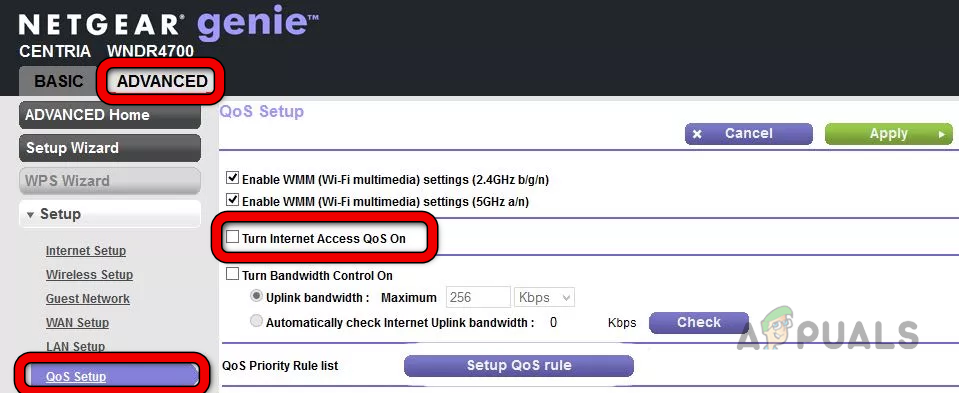
Disable QoS in the Router’s Settings - Apply the changes and then test if Netflix’s buffering problem is fixed.
8. Disable the Daisy Chain Network Topology (if applicable)
In a mesh network, the Daisy Chain topology permits network nodes to link to the router via another nearby node. However, this can introduce extra lag in the Netflix data packet transmissions and may cause buffering. Disabling Daisy Chain in the router settings could address this issue. We’ll illustrate using an Orbi router’s settings as an example.
- Access your Orbi router’s web portal through a web browser (you may use Orbilogin.net).
- Login with your credentials and navigate to Settings.
- Choose Advanced, find Wireless Settings, and untick the Daisy Chain box. Then apply the changes.
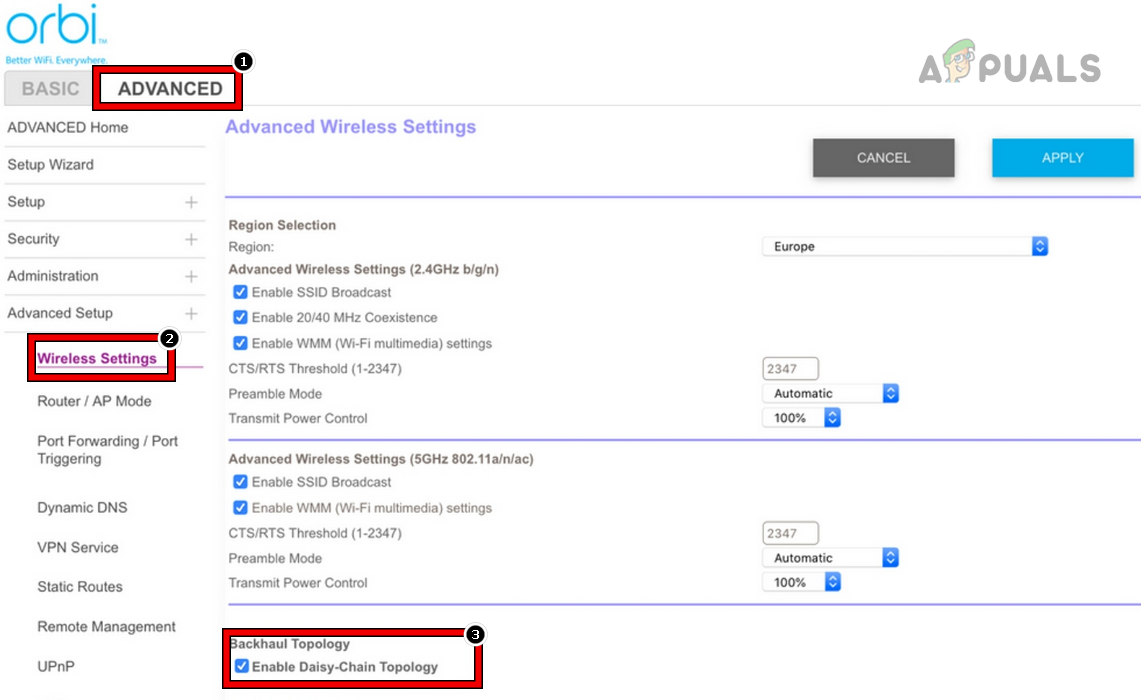
Disable Daisy Chain Topology in the Router Settings - Restart the router and all related devices, then check if the Netflix buffering issue is resolved once they are back online.
9. Change the MTU Size in the Router Settings
The MTU size determines the maximum data unit that can be transmitted over a network. If the MTU size set by your router is not compatible with Netflix servers, it could result in buffering, as the servers might take longer to parse the data. Changing the MTU size in router settings might resolve the Netflix problem. We’ll describe how to do this using the example of a Huawei ONT router.
- Open a web browser and head to your ONT router’s web portal (like 192.168.10.1).
- Login using the default credentials (typically username: admin, password: admin) and go to the Network tab.
- Under the WAN sub-tab, locate WAN Configuration and set the MTU Size to 1460.
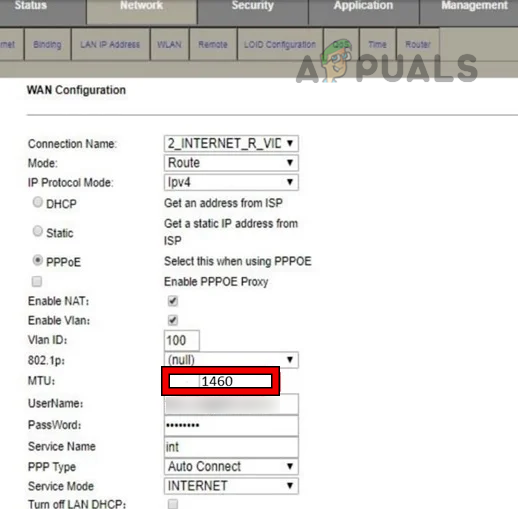
Set MTU Size in the Router Settings to 1460 - Save changes and restart your router and all devices associated with your network.
- Once restarted, check if Netflix is still experiencing buffering issues.
10. Disable the Router’s Security Plugin
Many routers, like the NetGear Orbi, feature built-in security plugins such as Orbi Armor. If these security plugins are filtering data traffic from Netflix servers, processing by the security modules may increase the buffering time of Netflix and cause issues. Disabling the security plugin could solve the problem. We’ll take a look at disabling Orbi Armor as an example, which has been reported to cause such issues.
Warning: Proceed with caution and at your own risk, as disabling security features may expose your network and devices to threats. Consult with your ISP first and then proceed.
- Open the Netgear Orbi app (install it if it’s not already there) and go into Settings.
- Select Security and disable Orbi Armor if it is enabled.
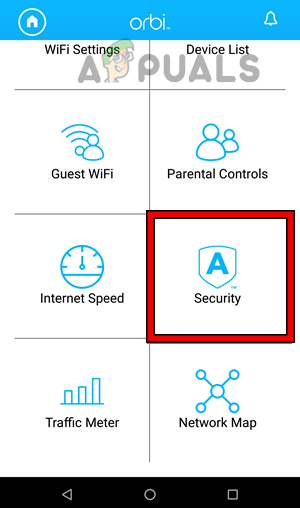
Open Security in the Orbi App Settings - Restart your router and any connected devices.
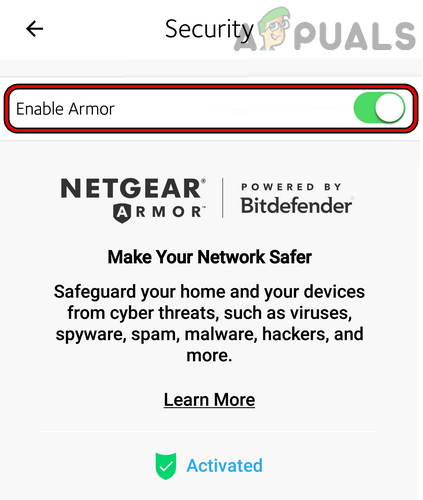
Disable Armor in the Orbi Security Settings - Verify if Netflix is now buffering smoothly after these adjustments.
11. Reinstall the Netflix App
Faulty installation of the Netflix app could lead to buffering issues, possibly due to incompatibilities with its servers. Reinstalling the Netflix app might resolve these issues. Here is how to reinstall the Netflix app on Android devices for reference:
- Go to your Android device’s Settings and select Applications or Apps.
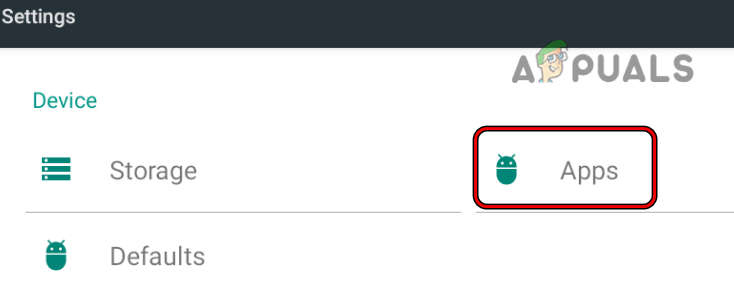
Open Apps in the Android Phone Settings - Open the Netflix app and select Force Stop.
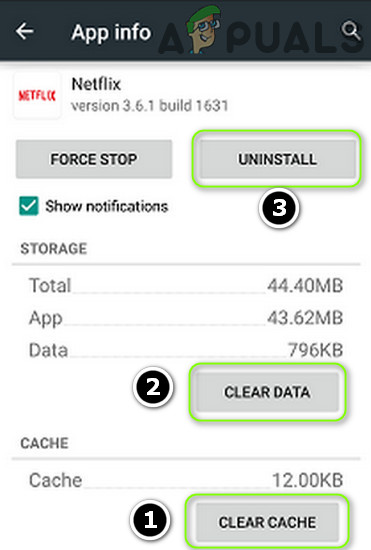
Clear Cache and Data of Netflix and Uninstall it - Confirm to force stop the app, then proceed to Netflix’s Storage.
- Press the Clear Cache followed by Clear Data buttons.
- Confirm the action and tap the back button.
- Now, select Uninstall and then confirm to uninstall Netflix.
- After the device restarts, reinstall Netflix from the app store, and check if the buffering issue no longer occurs.
12. Change the Bitrate of the Stream
Those with slower internet connections may experience buffering. If your internet connection isn’t particularly fast, you could try decreasing the bitrate of the Netflix stream to mitigate the issue. First, ensure that any refresh rate applications Control + Shift + Option + S (for macOS) to open the hidden menu.
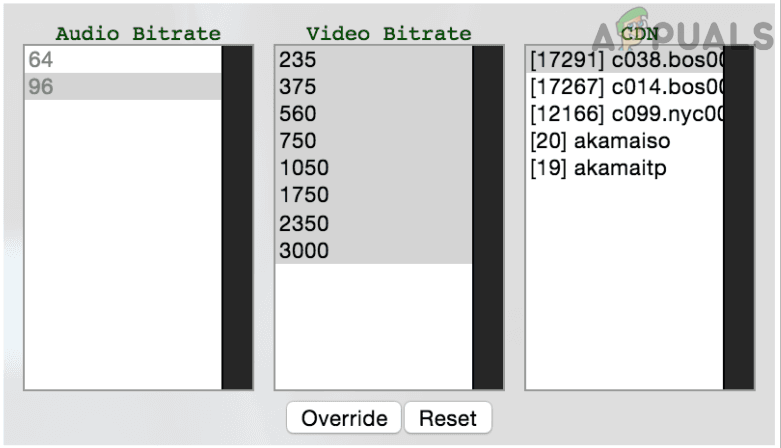
- Manually select a lower bitrate to begin with and see if that resolves the buffering issue.
- If you are not using a PC, or the problem persists, navigate to the Netflix website using a web browser and click on your profile icon.
- Select Account and, under Profile & Parental Controls, choose the relevant profile.
- Press Change next to Playback Settings, and under Data Usage Per Screen, select Low.
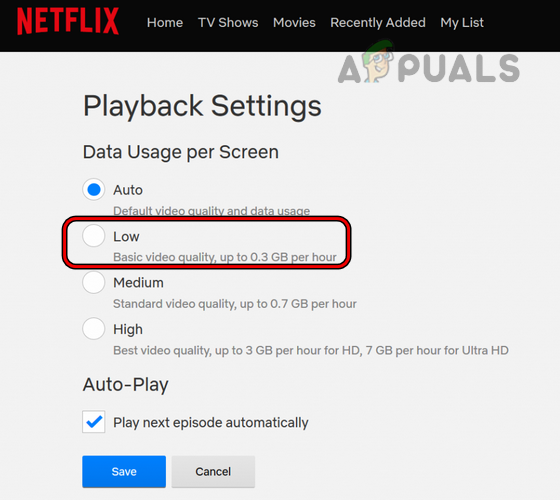
Set Data Usage Per Screen of Netflix to Low - Save the settings and verify if the buffering has stopped. If the issue is resolved and your internet speed can handle it, you might gradually increase the Data Usage Per Screen setting to Medium or higher.
13. Reset the Browser Settings to the Defaults
Incorrect browser configuration could interfere with the proper functioning of the Netflix website, leading to buffering. Resetting your browser to its default settings may address the issue. The following illustrates the process using Google Chrome.
- Launch the Chrome browser and click on the three vertical dots in the top right corner, then choose Settings.
- In the settings menu, expand the Advanced tab on the left.
- Click on the Reset and Cleanup section.
- In the main window, select Restore settings to their original defaults, then confirm your choice to reset the settings.
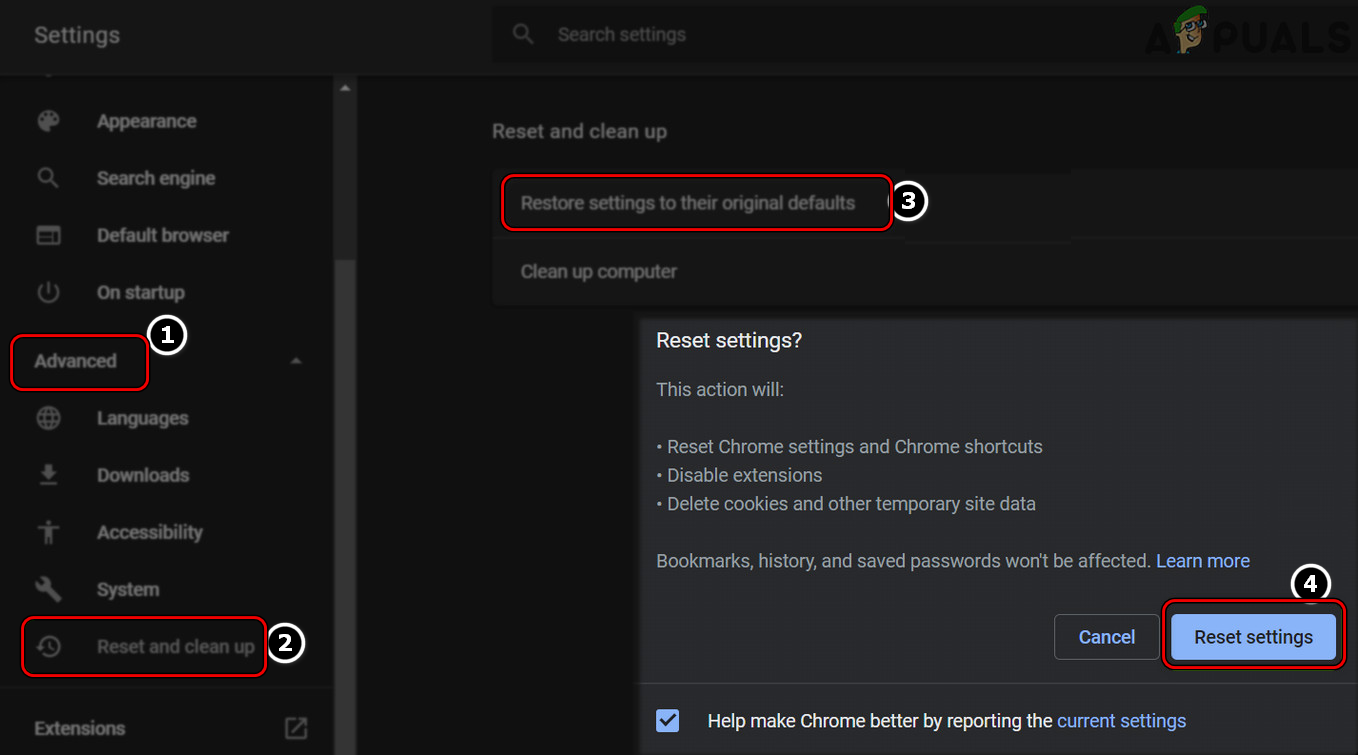
Reset Chrome Settings to Defaults - After resetting, reopen the browser and navigate to Netflix to check if the streaming issue has been resolved.
- If this doesn’t work, try accessing Netflix using a different browser or download the Netflix desktop app (e.g., from the Microsoft Store).
If after following all the above steps the issue remains unresolved, and particularly if it was fixed on a different network, you should contact your ISP’s support to rectify the problem. Otherwise, reaching out to Netflix customer service or the support for your device (like Apple Support) may help you resolve the issue.





